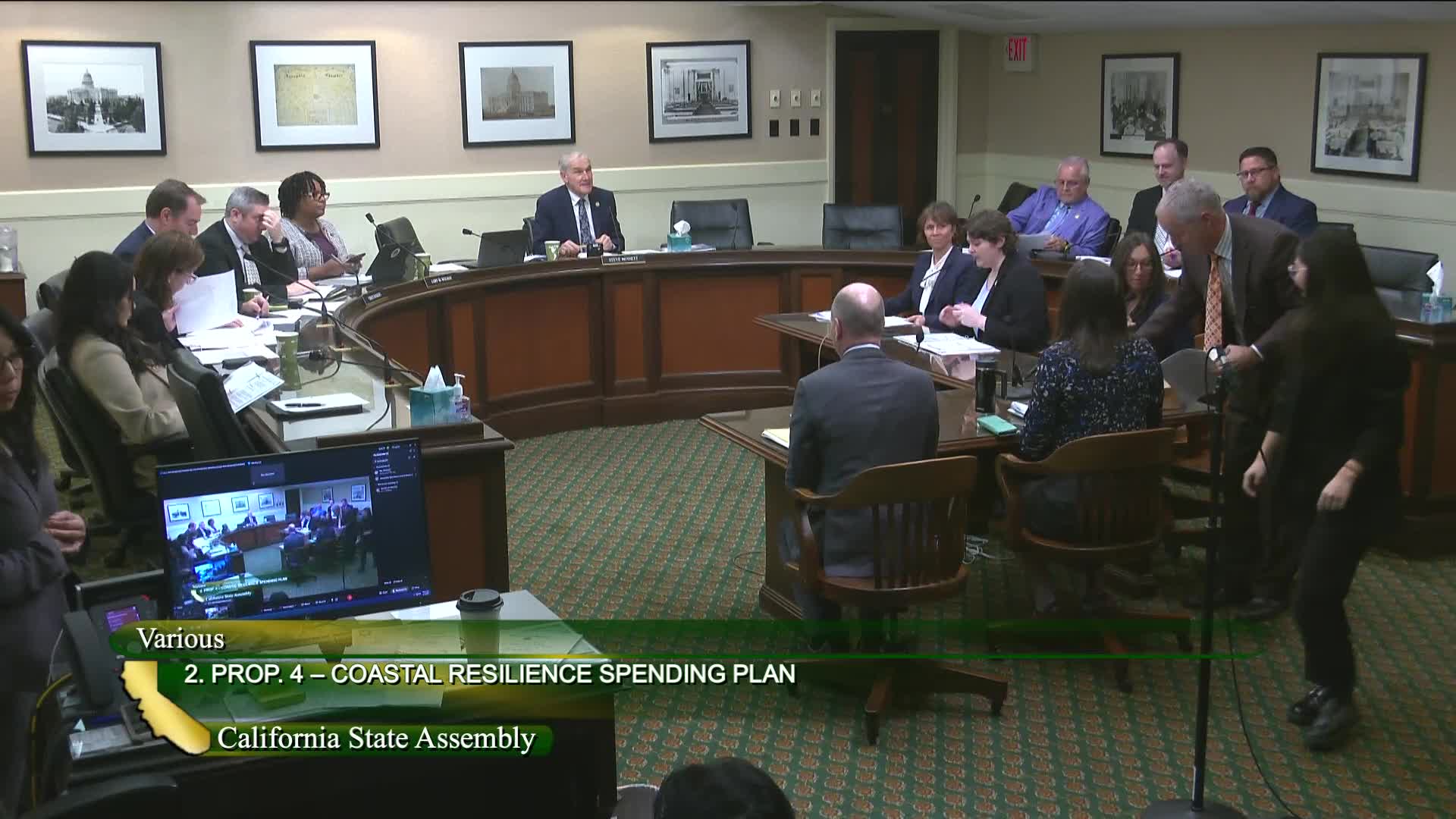Governor's budget allocates $1.2 billion for California coastal resilience programs
March 05, 2025 | California State Assembly, House, Legislative, California
This article was created by AI summarizing key points discussed. AI makes mistakes, so for full details and context, please refer to the video of the full meeting. Please report any errors so we can fix them. Report an error »

In a pivotal meeting held by the California Assembly Budget Subcommittee on Climate Crisis, Resources, Energy, and Transportation, state officials outlined a comprehensive plan to bolster coastal resilience amid the growing threats posed by climate change. The discussions centered around a significant allocation of $1.2 billion from the governor's budget, aimed at enhancing coastal protection and restoration efforts across various programs and departments.
Caitlin Kalua, deputy director of the California Ocean Protection Council, emphasized the urgency of addressing climate impacts such as sea level rise, storm surges, and coastal erosion. These challenges not only jeopardize public health and safety but also threaten critical infrastructure and ecosystems. The Ocean Protection Council is set to receive $135 million over the bond's lifetime to fund projects that conserve and restore marine wildlife and coastal ecosystems. Kalua highlighted that over 50 immediate priority projects have already been identified, with a focus on increasing ocean health and resilience.
The proposed budget also includes $20 million for sea level rise adaptation efforts, which will be facilitated through existing grant programs. This funding aims to support local and tribal governments in developing effective adaptation plans and resilience projects. The council anticipates a growing demand for these funds, prompting a multi-year spending plan to accelerate the allocation of resources.
Amy Hutzsell from the California Coastal Conservancy further detailed the funding strategy, which allocates $415 million for coastal resilience, including $85 million specifically for the San Francisco Bay area. The conservancy plans to roll out these funds over the next decade, starting with 10% in the 2025-2026 fiscal year. Hutzsell noted that the funding will support a range of projects, from flood management to habitat restoration, with a particular emphasis on disadvantaged communities and public infrastructure.
The meeting underscored the collaborative efforts among various state agencies to maximize the benefits of the funding, ensuring that projects align with broader state strategies, including the ambitious goal of conserving 30% of California's lands and waters by 2030. As the state grapples with the realities of climate change, these initiatives represent a proactive approach to safeguarding California's coastal communities and ecosystems for future generations.
Caitlin Kalua, deputy director of the California Ocean Protection Council, emphasized the urgency of addressing climate impacts such as sea level rise, storm surges, and coastal erosion. These challenges not only jeopardize public health and safety but also threaten critical infrastructure and ecosystems. The Ocean Protection Council is set to receive $135 million over the bond's lifetime to fund projects that conserve and restore marine wildlife and coastal ecosystems. Kalua highlighted that over 50 immediate priority projects have already been identified, with a focus on increasing ocean health and resilience.
The proposed budget also includes $20 million for sea level rise adaptation efforts, which will be facilitated through existing grant programs. This funding aims to support local and tribal governments in developing effective adaptation plans and resilience projects. The council anticipates a growing demand for these funds, prompting a multi-year spending plan to accelerate the allocation of resources.
Amy Hutzsell from the California Coastal Conservancy further detailed the funding strategy, which allocates $415 million for coastal resilience, including $85 million specifically for the San Francisco Bay area. The conservancy plans to roll out these funds over the next decade, starting with 10% in the 2025-2026 fiscal year. Hutzsell noted that the funding will support a range of projects, from flood management to habitat restoration, with a particular emphasis on disadvantaged communities and public infrastructure.
The meeting underscored the collaborative efforts among various state agencies to maximize the benefits of the funding, ensuring that projects align with broader state strategies, including the ambitious goal of conserving 30% of California's lands and waters by 2030. As the state grapples with the realities of climate change, these initiatives represent a proactive approach to safeguarding California's coastal communities and ecosystems for future generations.
View full meeting
This article is based on a recent meeting—watch the full video and explore the complete transcript for deeper insights into the discussion.
View full meeting
